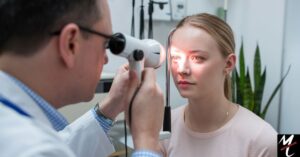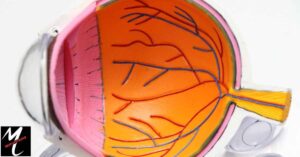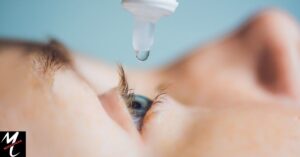In today’s fast-paced world, our eyes are constantly exposed to various stressors and potential hazards. One common issue that many people experience is a popped eye vessel, also known as a subconjunctival hemorrhage.
This condition, while often alarming in appearance, is usually harmless and resolves on its own. However, understanding its causes, treatments, and prevention methods can help alleviate concerns and promote better eye care. In this comprehensive guide, we’ll explore everything you need to know about popped eye vessels, from their causes to long-term effects and when to seek medical attention.
What is a Popped Eye Vessel?
A popped eye vessel, medically termed a subconjunctival hemorrhage, occurs when a small blood vessel breaks beneath the clear surface of your eye. This surface, called the conjunctiva, is a thin, transparent layer that covers the white part of your eye (sclera). When a blood vessel in this area ruptures, it creates a bright red patch on the white of your eye.
Appearance and Symptoms
The most noticeable symptom of a popped eye vessel is a striking red spot on the white part of your eye. This eye redness can vary in size, from a small dot to a larger patch covering a significant portion of the eye’s surface. Despite its alarming appearance, a popped eye vessel typically doesn’t cause pain or vision changes. Some people may experience a mild sensation of fullness in the affected eye or slight eye irritation.
Common Misconceptions
Many misconceptions surround popped eye vessels, often leading to unnecessary worry. One common myth is that a popped eye vessel is a sign of a serious eye injury or underlying health condition. In reality, most cases are benign and resolve without complications. Another misconception is that popped eye vessels can spread to the other eye or are contagious. This is not true, as the condition is localized and not infectious.
Causes of Popped Eye Vessels
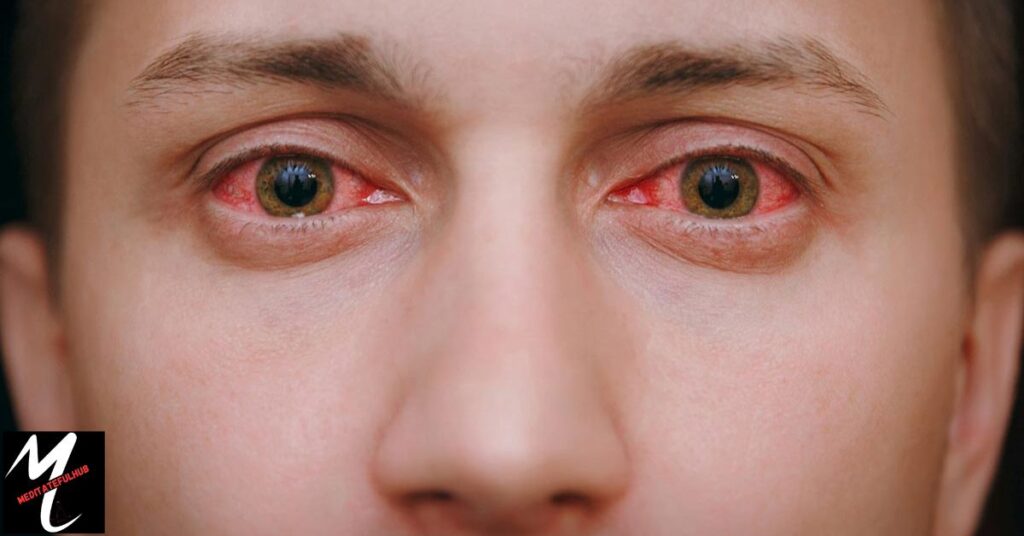
Understanding the causes of popped eye vessels can help in prevention and management. Blood vessel rupture in the eye can occur due to various factors, ranging from simple physical actions to underlying medical conditions.
Physical Causes
Many cases of popped eye vessels result from physical actions that increase pressure in the blood vessels of the eye. These can include:
- Vigorous eye rubbing
- Intense sneezing or coughing fits
- Straining during bowel movements
- Heavy lifting
- Vomiting
These actions can temporarily increase blood pressure in the delicate vessels of the eye, causing them to rupture.
Environmental Factors
Environmental factors can also contribute to the occurrence of popped eye vessels. Eye strain from prolonged computer use or reading, especially in poor lighting conditions, can stress the eyes and potentially lead to blood vessel rupture. Additionally, irritants like dust, smoke, or chlorinated pool water can cause eye irritation, leading to rubbing and potentially popped vessels.
Diagnosis of Popped Eye Vessels
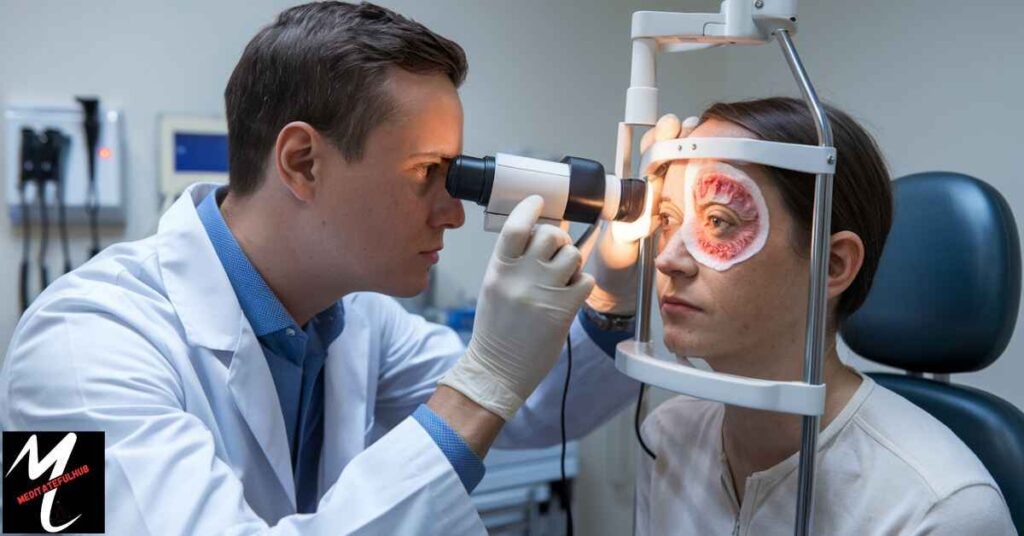
Diagnosing a popped eye vessel is typically straightforward due to its distinctive appearance. However, it’s essential to distinguish it from other eye conditions that may require different treatments.
Self-Diagnosis
In most cases, individuals can identify a popped eye vessel by looking in a mirror. The characteristic bright red patch on the white of the eye is usually unmistakable. However, it’s important to note any additional symptoms, such as pain, vision changes, or discharge, which may indicate a different condition.
Professional Diagnosis
While self-diagnosis is often sufficient, there are instances where professional medical evaluation is necessary. An ophthalmologist or optometrist can confirm the diagnosis and rule out more serious conditions. During an eye examination, the doctor will:
- Examine the eye using a slit lamp microscope
- Check for signs of infection or inflammation
- Assess overall eye health and vision
- Review medical history to identify potential underlying causes
Treatment Options for Popped Eye Vessels
The good news is that most popped eye vessels don’t require specific treatment and will heal on their own. However, there are measures you can take to alleviate discomfort and promote healing.
Self-Care Measures
For most cases of popped eye vessels, self-care is sufficient. Here are some steps you can take:
- Eye drops: Artificial tears can help soothe any irritation and keep the eye lubricated.
- Cold compress: Applying a cold compress to the affected eye can help reduce any swelling or discomfort.
- Avoid rubbing: Resist the urge to rub your eye, as this can worsen the condition or cause rebleeding.
- Rest: Give your eyes frequent breaks, especially if you spend long hours looking at screens.
Medical Interventions
In rare cases where a popped eye vessel is associated with more serious conditions or doesn’t resolve on its own, medical intervention may be necessary. This could include:
- Prescription eye drops to reduce inflammation
- Treatment of underlying conditions (e.g., high blood pressure)
- In extreme cases, minor surgical procedures to drain excess blood
Read This Blog: What Happens If You Use Out of Date Eye Drops: A Comprehensive Guide
Recovery and Healing Process
Understanding the recovery process can help alleviate concerns and set realistic expectations for healing.
Expected Duration
The healing time for a popped eye vessel can vary, but typically ranges from one to three weeks. During this time, the blood gradually absorbs back into the body, and the red patch slowly fades. The healing process usually follows this pattern:
- Days 1-3: The red patch may appear brightest and most noticeable.
- Days 4-7: The redness begins to fade, often changing to a darker red or brownish color.
- Weeks 2-3: The patch continues to fade and may appear yellowish before completely disappearing.
Monitoring Progress
While healing, it’s important to monitor the affected eye for any changes. Keep an eye out for:
- Gradual fading of the red patch
- Any increase in size of the affected area
- Development of new symptoms like pain or vision changes
If you notice any concerning changes or if the condition doesn’t improve after three weeks, consult an eye care professional.
Prevention Strategies
While not all cases of popped eye vessels can be prevented, there are steps you can take to reduce your risk.
Lifestyle Changes
Incorporating healthy eye habits into your daily routine can significantly reduce the risk of popped eye vessels:
- Practice good eye hygiene: Avoid rubbing your eyes and wash your hands frequently.
- Manage underlying health conditions: Keep conditions like hypertension and diabetes under control.
- Stay hydrated: Proper hydration helps maintain the health of your blood vessels.
- Get enough sleep: Adequate rest reduces eye strain and promotes overall eye health.
Protective Measures
In certain situations, taking protective measures can prevent eye injuries that might lead to popped vessels:
- Wear protective eyewear during sports or potentially hazardous activities.
- Use appropriate eye protection in work environments with airborne particles or chemicals.
- If you wear contact lenses, practice proper lens hygiene and don’t wear them for longer than recommended.
When to Seek Medical Attention
While most cases of popped eye vessels are harmless, there are situations where medical attention is necessary.
Warning Signs
Seek medical care if you experience any of the following:
- Vision changes or loss
- Severe eye pain
- Eye swelling or bulging
- Persistent eye bleeding or recurrent popped vessels
- Symptoms of infection (e.g., discharge, fever)
Emergency Situations
Immediate medical attention is crucial in cases of:
- Eye trauma from significant impact or penetrating injury
- Chemical exposure to the eye
- Sudden vision loss or severe eye pain
Long-Term Effects and Complications
For most people, popped eye vessels are a one-time occurrence with no long-term effects. However, frequent recurrences may indicate underlying issues.
Recurring Popped Eye Vessels
If you experience frequent popped eye vessels, it could be a sign of:
- Uncontrolled high blood pressure
- Blood clotting disorders
- Side effects from certain medications, particularly blood thinning medications
In these cases, addressing the underlying cause is crucial for preventing future occurrences.
Associated Eye Conditions
While rare, recurrent popped eye vessels might be associated with other eye conditions such as:
- Conjunctivitis: Inflammation of the conjunctiva
- Blepharitis: Inflammation of the eyelids
- Dry eye syndrome
These conditions may require specific treatments to manage and prevent complications.
Also Read: Does Character AI Allow NSFW Content?
Special Considerations
Certain groups may need to take extra precautions or consider additional factors when dealing with popped eye vessels.
Age-Related Factors
As we age, our blood vessels become more fragile, potentially increasing the risk of popped eye vessels. Older adults should:
- Have regular eye check-ups
- Be cautious with medications that can thin the blood
- Take extra care to avoid eye injuries
Occupational Hazards
Some professions carry a higher risk of eye injuries that could lead to popped vessels. If your job involves potential eye hazards:
- Always wear appropriate protective eyewear
- Follow safety protocols rigorously
- Have regular eye examinations to monitor eye health
FAQ
Can popped eye vessels affect vision?
In most cases, popped eye vessels do not affect vision. The blood is underneath the clear conjunctiva and doesn’t interfere with the eye’s ability to focus light. However, if you experience any vision changes along with a popped vessel, seek medical attention immediately.
Are popped eye vessels contagious?
No, popped eye vessels are not contagious. They result from a localized blood vessel rupture and cannot spread to others or even to your other eye.
How can I differentiate between a popped eye vessel and other eye conditions?
While a popped eye vessel is characterized by a bright red patch on the white of the eye without pain or vision changes, other conditions may have different symptoms:
- Conjunctivitis: Often accompanied by itching, discharge, and redness in both eyes
- Eye injury: May involve pain, swelling, and potential vision changes
- Corneal abrasion: Usually causes pain, a feeling of something in the eye, and light sensitivity
Conclusion
Popped eye vessels, while often alarming in appearance, are usually harmless and self-resolving. Understanding their causes, treatment options, and prevention strategies can help you maintain good eye health and know when to seek medical attention.
Remember, your eyes are precious – practicing good eye care habits and seeking prompt medical attention when necessary are key to preserving your vision and overall eye health. If you experience recurrent popped eye vessels or have concerns about your eye health, don’t hesitate to consult with an eye care professional. Your eyes deserve the best care possible!

George, an esteemed author with 8 years of experience in meditation, imparts transformative knowledge on meditatefulhub.com. His writings resonate globally, guiding individuals on a profound journey of self-discovery and inner peace.





